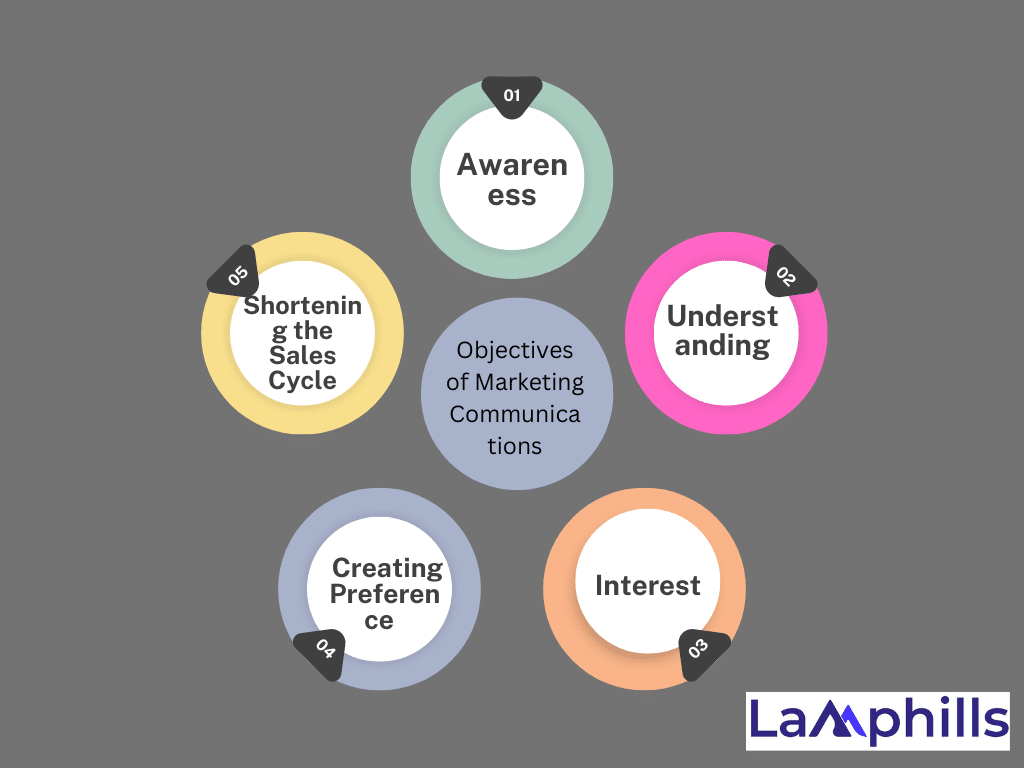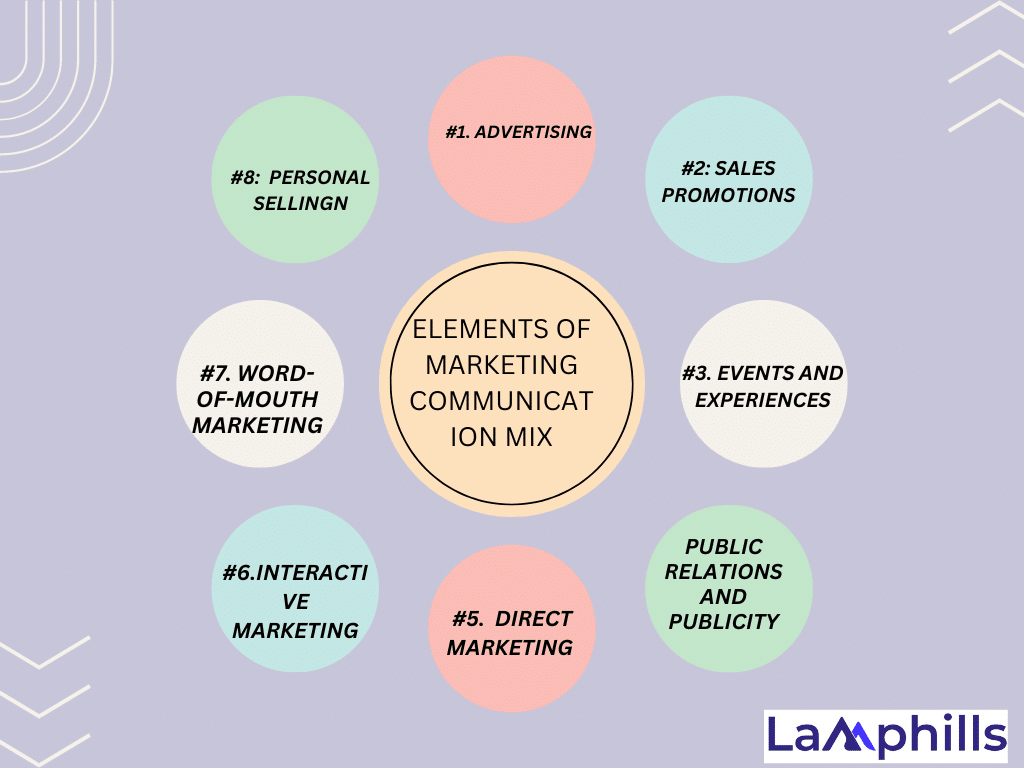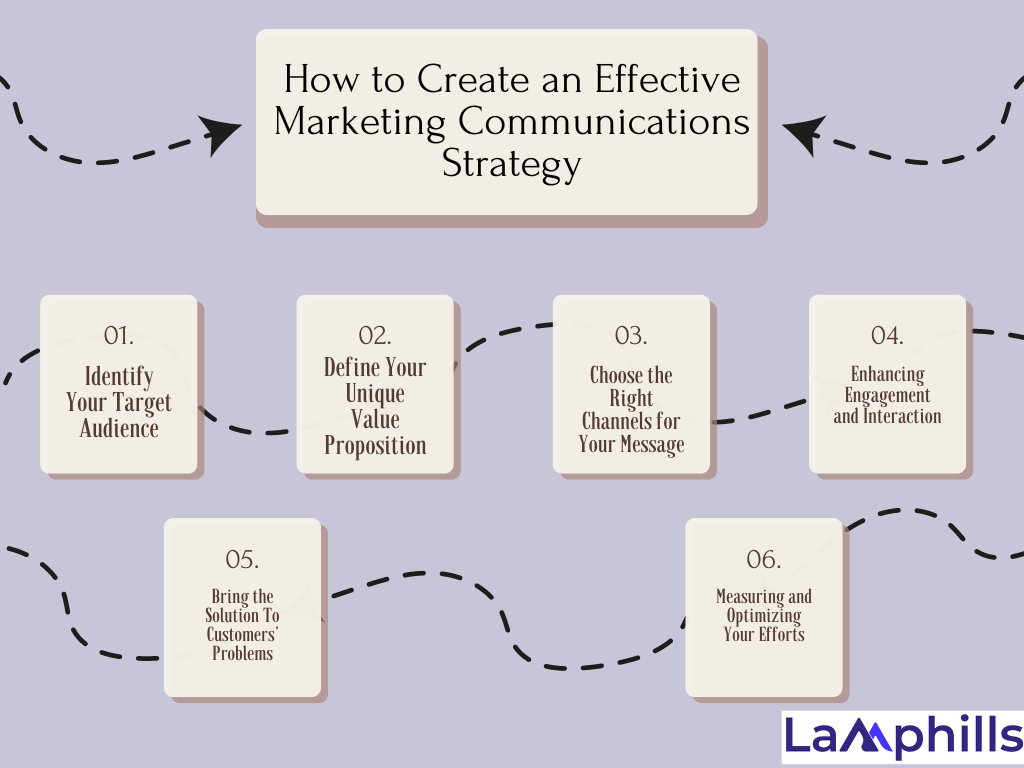See yourself entering a busy marketplace. There are hundreds of sellers there, all yelling for your attention, and everyone has a unique product to market. Trust me, I am certain you will go for that one voice that sticks out in the midst of all of this chaos—that of a vendor who isn’t just shouting louder, but speaking to you directly and leaving a profound impression. Now, that’s the key to being an expert in marketing communications.
I recall my initial days of employment at a small startup. Despite having a fantastic product, we had trouble standing out in a competitive market. From eye-catching advertisements to forceful sales presentations, we tried everything, but nothing stuck. Things didn’t start to change until we mastered the craft of effective marketing communications. We started connecting with our audience on a deeper level, and our message finally began to cut through the noise.
In the same way, before flooding your consumers with information, make sure to understand that the art of marketing communications is more important than ever. Whether you’re a new entrepreneur or an experienced business expert, knowing how to design and deliver your brand’s message can make all the difference. In this article, I’ll discuss tried-and-true practical tactics for amplifying your brand’s voice and connecting with your audience in meaningful ways.
Takeaways
- Your brand’s message should be clear, compelling, and consistent across all communication channels. It’s essential to articulate what makes your brand unique (your unique value proposition) and to maintain a consistent voice that reflects your brand’s personality.
- Understanding where your audience spends their time and how they prefer to receive information is crucial. Tailor your communication strategies to their preferences and behaviors, and select the most effective channels—whether it’s social media, email, or content marketing—to reach and engage them.
- Storytelling and interactive content create deeper connections with your audience. Use stories to make your brand relatable and memorable, and leverage interactive elements like quizzes, polls, and user-generated content to boost engagement.
- Regularly track key performance metrics, analyze the data to understand what’s working, and be prepared to adapt your strategies. Continuous improvement and staying updated with trends are vital for keeping your communications effective and relevant.
What is Marketing Communication?

The strategies used by a firm or a person in the business world to spread promotional messages about their goods and services can be referred to as marketing communications. Different forms of persuasive communication are created by marketing communication experts and distributed to the intended audience.
An essential and intricate component of a business’s marketing initiatives is marketing communication or MarCom. MarCom is broadly defined as all of the media and messaging you use to interact with the market. In other words, marketing communications are the heartbeat of brand building. They are the conversations you have with your audience, shaping how they perceive your brand.
Understanding Marketing Communications
The term “marketing communication” describes the strategies used by businesses to inform consumers about the goods and brands they carry, either directly or indirectly, to influence their buying decisions. Stated differently, marketing communication refers to the various channels that a business uses to inform consumers about its products and services.
To establish brand awareness among potential customers—that is, to form an impression of the brand in their minds that aids in their choice to buy—marketers employ marketing communication methods. Solutions to the following queries are provided by marketing communication:
- Why will the product be used?
- How can the product be used?
- Who can use the product?
- Where can the product be used? And
- When can the product be used?
Marketing communication includes advertising, sales promotion, events and experiences (sponsorship), public relations and publicity, direct marketing, interactive marketing, word-of-mouth marketing, and personal selling. These tools of communication are collectively called the Marketing Communication Mix.
Objectives of Marketing Communications

In a market full of competitors, companies leverage different unique techniques and tactics to reach their audiences. They combine marketing channels and tools to convey the necessary message and make sure that prospects understand it. These communications include advertising, PR, sponsorships, promotion, social media, etc. They help fulfill different objectives, to name a few:
#1. Awareness
Before expecting a target audience to be interested in a company’s product or service, a marketing communications specialist must first establish that they are aware of it. Also, the marketing communications team employs many channels to raise awareness, such as advertising, public relations, and direct marketing.
#2. Understanding
After informing the audience about the product or service, the marketing communications specialist’s next responsibility is to ensure that the target audience completely knows what it is and does. They accomplish this with a distinct brand and messaging.
#3: Interest
Now that the audience is familiar with and understands the company’s product or service, the marketing communications team can develop an interest in it. They can do it through effective marketing campaigns that emphasize the benefits of the product or service.
#4. Creating Preference
Creating preference is frequently a long-term endeavor that involves employing communication tools to position your product or company in the thoughts of the target customer. Positioning and establishing a brand takes time and demands consistency (not only in communication efforts, but also in the basic elements of product, pricing, and distribution), and thus constitutes a considerable investment for the company.
Remember that establishing preference through brand development will have an impact on market share, profitability, and even access to talent—and so bring long-term value to the organization.
#5. Shortening the Sales Cycle
This includes aiding your sales and channel partners in their efforts to find, engage, and deliver customers. Understanding the customer’s purchase process provides crucial information on how to reduce the sales cycle. The graphic below depicts the steps a buyer goes through while purchasing a product.
In addition to that, employees must conduct market research and speak with salespeople to see how they might help speed up the process. The sales cycle for high-tech items includes a significant degree of customer education in the early phases. To achieve this education requirement, MarCom must focus on generating, packaging, and providing relevant information to the buyer throughout the purchasing process.
Elements of Marketing Communication Mix

#1. Advertising
It is an indirect, paid approach used by corporations to inform clients about their goods and services through television, radio, print media, and online portals. Advertising is one of the most extensively utilized forms of communication, as it allows complete information about a company’s products and services to be quickly transmitted to a large target audience.
#2. Sales Promotions
The sales promotion contains several short-term incentives to encourage clients to acquire the goods and services. This promotion method not only helps to maintain existing consumers but also draws new ones by offering extra perks. Sales promotion tactics include rebates, discounts, paybacks, a buy-one-get-one-free scheme, coupons, and so on.
#3. Events and Experiences
Several organizations support events such as sports, entertainment, nonprofits, or community activities to help customers remember their brands and form long-term relationships with them. The name of the event’s sponsor can be found on playground boundaries, player jerseys, trophies, awards in entertainment shows, stage hoardings, and so on.
#4. Public Relations and Publicity
The corporations engage in a variety of social initiatives to promote a positive brand image in the market. Companies are taking steps to improve public relations by building public facilities, donating a portion of their profits to child education, organizing blood donation camps, planting trees, and so on.
#5. Direct Marketing
With the intent of technology, the companies make use of emails, faxes, and mobile phones, to communicate directly with prospective customers without involving any third party in between.
#6. Interactive Marketing
Interactive marketing has lately acquired popularity as a marketing communication strategy, allowing customers to communicate with businesses and have their questions answered online. Amazon is one of the best examples of interactive marketing, with customers making their own choices and being able to see what they have just ordered. Also, other websites, such as answer.com, provide a platform for users to ask questions and receive answers online.
#7. Word-of-Mouth Marketing
It is one of the most common forms of communication in which buyers share their recent purchases with their peers and acquaintances. This strategy is extremely important for businesses because the brand’s image depends on how the customer feels about the brand and what message it conveys to others.
#8. Personal Selling
This is the classic way of marketing communication in which salespeople approach potential clients personally and enlighten them about the products and services they offer. It is regarded as one of the most dependable ways of communication because it is conducted immediately, either orally, i.e., face to face, or in writing via emails or text messages.
Thus, the marketing communication mix refers to the various means that a business might use to inform, convince, and remind customers about the products and services it offers.
How to Create an Effective Marketing Communications Strategy

I remember when I first started my business. We had a unique product, but we struggled to be noticed. We attempted many marketing strategies, but nothing seemed to stick. Things began to change after we refined our communication strategy, which included analyzing our target, defining our message, and selecting the appropriate platforms. Suddenly, our voice was heard, and our brand began to flourish.
In today’s fast-paced digital world, mastering marketing communications is essential for any business looking to connect with its audience and stand out. Let’s see how my step-by-step guide will help you create a strategy and make your business grow.
#1. Identify Your Target Audience
Offering your goods to everyone does not work. Instead, you must target certain audience segments that require your solution to solve their problem. That is why you must determine your target audience, including their location, age, gender, interests, preferences, needs, occupation, and so on.
This will enable you to create personalized communications and marketing strategies. You’ll also know which channels are best for reaching out to your ideal customer. Create a buyer persona to describe the qualities of your target consumer. It will assist you in selecting the people to target. To create an authentic buyer persona, include the customer’s job title, pain points, difficulties, and goals.
#2. Define Your Unique Value Proposition
UVP differentiates your organization and exceeds its competition. It is necessary to have one to demonstrate it to your audience and prove that you are superior to other companies for whatever reason. UVP is the solution your clients require. If you successfully assist your clients, they will reward you with increased revenue, word-of-mouth promotion, a larger customer base, a better market position, and other benefits.
For example, Domino’s Pizza presents itself as a company that delivers the freshest and hottest pizza faster than competitors, in only 30 minutes. To determine your UVP, ask yourself: What distinct advantages do you provide? Why should they select you above your competitors? With the right answers to that question, all of your marketing communications should revolve around your unique selling proposition.
#3. Choose the Right Channels for Your Message
This checklist will help you craft a clear and compelling message for your brand
To effectively communicate with your audience, you must understand where they are and how they prefer to receive information. This includes undertaking extensive audience research and segmentation.
For example, if your target demographic is young adults, sites such as Instagram, TikTok, or YouTube may outperform traditional media. If you’re targeting professionals, LinkedIn or email newsletters might be better options.
To obtain information about your target audience’s interests and behaviors, use technologies such as Google Analytics, social media insights, and customer surveys. To improve the effectiveness of your messages, segment your audience by demographics, interests, and behaviors. Each marketing channel has its capabilities and can serve a variety of goals.
- Social Media: is great for building brand awareness and engaging with your audience in real-time.
- Email Marketing: is effective for personalized, direct communication and nurturing leads.
- Content Marketing: is ideal for providing value through educational and informative content, establishing your brand as an authority in your field.
- Paid Advertising: is useful for reaching a broader audience quickly and driving targeted traffic to your site.
When evaluating channels, consider your objectives, audience preferences, and the nature of your message. Don’t spread yourself too thin—focus on the channels that will deliver the most impact for your brand.
#4. Enhancing Engagement and Interaction
When it comes to marketing communications, content reigns supreme. High-quality, interesting content may attract your readers and motivate them to take action. When developing content, prioritize adding value and meeting your audience’s wants and interests. HubSpot, for example, succeeds in content marketing by providing a plethora of free resources, such as eBooks, blogs, and webinars, to help their audience solve problems and expand their businesses.
Experiment with various sorts of content, such as blogs, videos, infographics, and podcasts, to find what resonates most with your target audience. To keep your audience engaged, combine instructional, entertaining, and inspirational information.
The addition of interactive content, such as quizzes, polls, and live videos, can greatly increase engagement by encouraging your audience to contribute rather than simply consume. BuzzFeed quizzes are an excellent illustration of how interactive content can go viral and generate tremendous interaction. These quizzes are not only entertaining but also extremely viral, allowing them to reach an organic audience.
User-generated content (UGC) is another effective tool. Encourage your audience to share their interactions with your business to foster connection and authenticity. Brands such as GoPro use user-generated content (UGC) to showcase spectacular movies filmed by their customers, instilling pride and belonging in their audience.
#5. Bring the Solution To Customers’ Problems
The next step is to correlate clients’ pain areas to the solution you offer. Make a table outlining consumer concerns and product solutions. You should highlight the offerings that solve clients’ needs. Share this table with your team to generate messages that address client concerns and offer solutions. Align messaging across all marketing channels used for communication.
#6. Measuring and Optimizing Your Efforts
After you’ve implemented everything, monitor the results. Check to see if your company is making progress toward its goals. Metrics will help you understand your company’s performance. To determine the efficacy of your marketing messages, you must track relevant KPIs. This could include:
- Engagement Rates: Likes, shares, comments, and clicks on social media and email campaigns.
- Conversion Rates: The percentage of users who take a desired action, such as making a purchase or signing up for a newsletter.
- Traffic Sources: Where your audience is coming from—organic search, social media, paid ads, etc.
- Customer Feedback: Reviews, surveys, and direct feedback can provide valuable insights into how your communications are perceived.
To track these indicators, use technologies such as Google Analytics, social media analytics, and email marketing dashboards.
In addition, data analysis is critical for determining what works and what does not. Use metrics to uncover patterns and trends, then adapt your plans accordingly.
For example, if you have strong engagement on your social media postings but poor website traffic, you may need to improve your call-to-actions or links. Alternatively, if email open rates are falling, try new subject lines or sending times. Case studies can offer significant insights. Examine samples from other brands or your previous campaigns to learn from triumphs and failures.
What is the difference between marketing communications and marketing?
Marketing is customer-centered, and communications encompasses the back-and-forth with clients and within the company.
What does a marketing communications specialist do?
Marketing communications specialists increase brand awareness for a company’s current and potential clients and work in nearly every industry to create marketing materials to distribute to customers, including newsletters, brochures, or email blasts.
What jobs can you get from marketing communications?
- Marketing Manager.
- Public Affairs Specialist
- Account Director
- Creative Director
- SEO Content Writer
- Influencer Marketing Manager
- Social Media Manager
- UX/UI Designer
What are the activities of marketing communications?
Marketing communication includes advertising, direct marketing, branding, packaging, your online presence, printed materials, PR activities, sales presentations, sponsorships, trade show appearances, and more.
Conclusion
Mastering marketing communications is a process, not a goal. It’s about always refining your message, knowing your audience, and using the best tools and channels to magnify your brand’s voice. You can strengthen relationships with your audience and elevate your brand by focusing on the fundamentals, producing a compelling message, selecting the correct channels, increasing interaction, and consistently measuring and optimizing your efforts. So, get started today. Apply these tactics listed here, discover your distinct voice, and allow it to resound throughout the marketplace. The entire world is waiting to hear your story.





